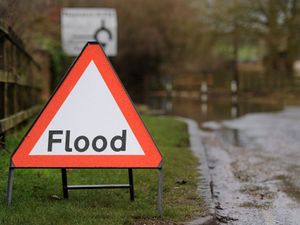Care home plans approved despite 295-signature petition
Hundreds of objectors have lost their battle to stop a former nursing home in South Staffordshire from being turned into a residential home for children with learning disabilities.
Neighbours living near Bearnett House Nursing Home in Lloyd Hill, near Wombourne, fear the nature of the potential young occupants will lead to noise and disruption for elderly residents.
They have said the company set to operate the home is described as providing ‘residential care activities for learning difficulties, mental health and substance abuse’, which has led to worries for the safety and wellbeing of those already living in the area including young children.
But supporting information has said the proposals will provide high standard enriching care for children and young people with learning disabilities, as well as respite for their families. It will also bring a vacant Grade II Listed building back into use.
South Staffordshire Council’s planning committee voted to approve the change of use of the site at its meeting this month. A petition containing 295 signatures was submitted to the authority opposing the change of use, as well as 67 other letters of objection.
One couple said: “We understand that many children with learning difficulties are able to live at home although they may attend some form of school during the day. It is only when they can no longer be managed at home that they need to go into residential care. These children are often very difficult, disruptive and noisy.
“I am also aware of a number of affluent international footballers living in the area, bringing needed income to local businesses in the area. From my conversations with some of these footballers, this application causes high concern over their security and well being, and has made them think of leaving the area – which we must avoid.”
Another said “The planning statement does not include any details or plans on making the perimeter of the property secure. As the children are intended to have access to the outside space/gardens, what security measures are being put in place by the applicant to ensure that children under his care do not abscond or wander on to neighbouring properties putting our homes and possession at risk?.
“As stated in the Department of Education’s children’s home data pack (Dec 2014) ‘children in children’s homes are more likely to have engaged in criminal activity’.
“I have two young children and this is meant to be a secure and safe environment for them to grow up in. At the moment they can play safely outside the house and often play outside on our private road with our neighbour’s grandchildren.
“This basic right will be taken away from them if Bearnett House is granted a change of use other than an elderly persons’ home, as I will fear for their safety.”
Sustainable
A statement from an objector read out at the meeting said: “We accept these homes need to go somewhere but it is incompatible with our local area. We believe it is not appropriate, given the tranquil environment.
“The proposed residents would have activities in the garden, which would create considerable noise and disruption.”
The meeting was told however a condition had been agreed that the residential accommodation at Bearnett House would only be used by children with learning disabilities. Staffing levels will be one to one during the day, between 7am and 10pm, and reduced overnight.
A planning statement submitted as part of the application said: “It is proposed that care be provided at the premises for nine full time resident children with learning difficulties. In addition, a further three beds would also be made available to provide ‘short stay’ respite care for children with learning difficulties. These respite facilities are used in order to enable the parents and families of the children to take a break from caring for them.
“The children’s needs are often complex and looking after them is demanding, placing strain on the families involved. By their nature, these three beds would only be occupied as and when required. This would usually be at weekends, as this is generally when respite care is provided.
“The provision of a maximum of 12 beds at the premises represents almost a 50 per cent reduction relative to the 23 bedrooms which were previously provided under the nursing home use. It is envisaged that the former bedrooms which would no longer be occupied under the proposals would be set aside for other purposes, including sensory rooms for the children, meeting rooms, staff changing facilities and storage space.
“Aside from the clear social benefits of the proposed use, which will ensure that children with learning difficulties receive an enriching, high standard of care, whilst also helping their families manage, these proposals represent an opportunity to bring back into use a disused Grade II Listed building which is currently vacant and vulnerable to vandalism and squatting.
“Should consent be granted and the site be brought back into use, the future of this designated heritage asset will be secured, and the building will be restored and maintained going forward. Should this application be refused, the purchase of the property will fall through and it will remain disused and at risk.
“The site is in a highly sustainable location, just off Stourbridge Road (A449), and is accessible by public transport. It is also, however, in a secure and secluded location.”




